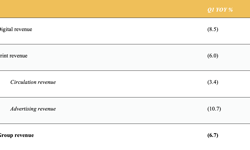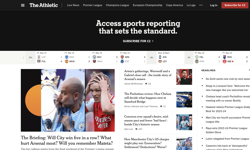Two years ago, my team at Peak Performance (www.pponline.co.uk) found a way to attract thousands of clicks using Adwords. Google’s visitors couldn’t click on our ads fast enough. We felt like those guys who study the Rules, the guidelines that tell lonely men how to pick up women, except, instead of a bursting little black book we had a swelling database. We thought, like many others, it was easy.
It turned out to be a lot more complicated than we thought.
In this article, I’m going to tell you how to be smart with Adwords and use it to build an email database that will convert into subscriptions and sales. The problem with Adwords is that it’s the easiest way to waste money since online poker. But, if you do it right, and follow the six rules below, it could transform your business.
Rule 1: You want to capture the attention of people who are specifically searching for something you can offer them.
The first thing you need to do is choose your keywords. At this point you can afford to be reasonably undiscerning.
One method is to use the Overture Keyword Selector at inventory.overture.com. Type in a word and Overture will tell you how many people searched for it last month on Yahoo! and the other sites covered by the Overture network. This will show you the popularity of your chosen field. For example, if you publish a newsletter for serious poker players, you can type in ‘poker’ and see what comes up. Think of all the words that your potential customers might type in and try those. You should be able to assemble a long list.
In my opinion, Overture’s keyword tool has now been surpassed by Google’s own keyword tool. You can find this within Adwords, under Tools. Stick in a few choice keywords and Google will suggest tons more. You can search your site – or any other – to find relevant keywords that would lead visitors to it. (Choose ‘site-related keywords’ and type in the URL.) Even better, it will produce a list assigning a rank to the words, which tells you how popular they are with searchers and other bidders.
Once you’ve got your list, you need to use a bit of product knowledge to weed out those that will attract the wrong kind of clicker. For example, our serious poker players wouldn’t need to know ‘poker rules’, so scrub that from your list. You could make ‘rules’ a negative keyword by putting a minus sign in front of it and ensuring your ad will never appear when this word is typed in.
Rule 2: Sending clickers to a dedicated landing page instead of our home page, or any other page on our site, had the single biggest impact on our ability to scale up.
Next you should think about where you want to send your clickers. Your immediate impulse might be to send them to your home page. If you’re trying to build a list, this is a big mistake. Send them to a landing page on which you should have nothing but a couple of enticing lines about what you offer (Amazing new techniques for poker players – Enter your email for our free newsletter) and somewhere for them to enter their email address. That’s it, apart from a privacy policy and maybe a logo. No navigation options.
We’ve also tried to sell products directly from landing pages. That hasn’t worked for us. It’s much better to capture their email address.
Rule 3: Make sure that your ad is worded so that it attracts the kind of people who would be likely to want to buy your product.
Next, you have to think about your ad copy. You have just 95 characters and a URL to convince the clickers you’re worth spending time with. Your instinct will be to grab their attention, maybe try to convince them you’ve got a sense of humour, promise all sorts of free, amazing pleasures …
Relax. Don’t do it. You have to be discerning. You don’t want any old Tom, Dick or Carrie clicking on your ad, spending your money. Your ad has to be attractive without being misleading. Having a big CTR (click-through rate) is important, because it helps improve your position, but it’s not everything.
So, for our poker newsletter, which is aimed at serious poker players, we want to use the ad as a filter to ensure that people looking for holidays to Vegas don’t click it. For example, you could use a line like ‘Free tips for elite poker players’.
A tip: the domain name on your ad is important. If it is something meaningless like www.ep-publishing.com, you should think about registering a domain that means something. www.Elite-Poker.com will get you more high quality clicks.
You should also take advantage of the facility that allows you to run two ads at a time, so you can tweak and test, frequently replacing the weaker ad.
Rule 4: Don’t waste your money!
In theory, it is possible to spend as little as a penny per click, and plausible to spend 2p. This partly depends on competition, but another important aspect is your quality score. The quality score is a highly mysterious thing. Google will reveal that it depends on your CTR, the historical performance of your keywords and the relevancy of your ad text. They also include the relevancy of your landing page. It’s unlikely that Google have people manually looking at landing pages; more likely, their spiders check the page for relevant keywords. In an ideal world, you should make sure that your keywords are included on your landing page – which might mean having a separate landing page for every keyword. This is not feasible for most businesses, so the best thing is to try a few and see if it makes a difference.
Finally, the quality score includes some secret ingredient X. As far as I can see, this is designed to get people who don’t know what they’re doing to spend more money. This is because Google will make your keywords inactive if the quality score is not high enough, and the easiest way to turn the words back on is to up your bid.
For example, you might want to bid on ‘elite poker tournaments’, convinced this will bring you quality clickers. But Google makes it inactive and asks you to pay 28p per click. The first thing to do is go to Google, try your keyword and see if anyone else is bidding on it. If there are very few, you know the keyword is expensive because no one ever keys that phrase in. Google are charging you a premium for the privilege of having an ad that won’t display very often.
Another tip: Google will allow you to place ads either on Google itself (‘search’) or on other sites (‘content’). Search ads get much higher CTRs and convert better.
Rule 5: Strand your campaigns, ads, landing pages … and everything else.
Our products are aimed at sportsmen and women, so we have a number of stranded campaigns aimed at runners, cyclists, etc. This means we can tailor our ads and landing pages to them. This is hugely effective. And it allows us to send stranded marketing to our new leads.
Rather than sending all your leads into one big pot, you should send them into stranded databases so you can target them specifically. (This can be done using an autoresponder sequence. The best software we’ve found is www.aweber.com.) You should send your best, most targeted marketing in the first 30 days. The welcome email will be the most opened email you ever send, then your second email, and so on. You should send three or four emails a week, using a mixture of editorial and advertising.
Rule 6: Your work is never done.
Now that your ads are running, you should keep a very close eye on how your ads and keywords are performing. It’s important to add Google’s tracking code to your pages, especially the post-purchase pages. This will allow you to see how every individual keyword converts to sales. Go to the Reports section on Google and create a customised report, although you need to let your ads run for at least a month before you’ll get much useful data. But, once you have this report, you will be able to work out your ROI and decide whether to increase your budget.
In the meantime, you should watch your CTRs and your average position. If a keyword has a very low CTR, it will drag down your average, so delete it. Keep testing copy and adding new keywords. If a keyword is made invalid, consider increasing the cost per click for it, but only if it’s a relevant, high-performing keyword. You might find, when you have enough data to make your reports meaningful, that some keywords bring in lots of leads but that none of them convert. Maybe you need to change your marketing; maybe you need to create a new product to sell to them. Or perhaps it’s time you and that keyword ended your relationship.
FEATURE
Adwords and the Rules of Attraction
Having every man and his dog visit your site is all very well, but, in all likelihood, your conversion rate will be lousy and you’ll be stung on cost per click. The important thing, says Mark Edwards, is quality not quantity and, here, he gives his six rules for optimising online marketing.










